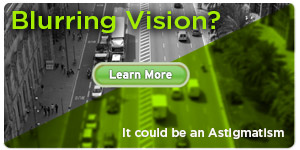Many children have vision problems other than simple refractive errors such as nearsightedness, farsightedness and astigmatism. These "other" vision problems include amblyopia ("lazy eye"), eye alignment or eye teaming problems, focusing problems, and visual perceptual disorders. Left untreated, these non-refractive vision problems can cause eyestrain, fatigue, headaches, and learning problems.
What Is Vision Therapy?
Vision therapy is a doctor-supervised, non-surgical and customized program of visual activities designed to correct certain vision problems and/or improve visual skills.
Unlike eyeglasses and contact lenses, which simply compensate for vision problems, or eye surgery that alters the anatomy of the eye or surrounding muscles, vision therapy aims to "teach" the visual system to correct itself.
Vision therapy is like physical therapy for the visual system, including the eyes and the parts of the brain that control vision.
Vision therapy can include the use of lenses, prisms, filters, computerized visual activities and non-computerized viewing instruments. Non-medical "tools," such as balance boards, metronomes and other devices can also play an important role in a customized vision therapy program.
It is important to note that vision therapy is not defined by a simple list of tools and techniques. Successful vision therapy outcomes are achieved through a therapeutic process that depends on the active engagement of the prescribing doctor, the vision therapist, the patient and (in the case of children) their parents.
Overall, the goal of vision therapy is to treat vision problems that cannot be treated successfully with eyeglasses, contact lenses and/or surgery alone, and help people achieve clear, comfortable binocular vision.
Many studies have shown that vision therapy can correct vision problems that interfere with efficient reading among schoolchildren. It also can help reduce eye strain and other symptoms of computer vision syndrome experienced by many children and adults. See below for more on conditions treated with vision therapy.
Problems Vision Therapy Can Correct
Vision problems being treated with vision therapy include:
- Amblyopia. Also called "lazy eye," amblyopia is a vision development problem where an eye fails to attain normal visual acuity, usually due to strabismus or other problems of eye teaming.
- Strabismus. The success of vision therapy for strabismus depends on the direction, magnitude and frequency of the eye turn. VT has been proven effective for treating an intermittent form of strabismus called convergence insufficiency, which is an inability to keep the eyes properly aligned when reading despite good eye alignment when looking at distant objects.
- Other binocular vision problems. Subtle eye alignment problems called phorias that may not produce a visible eye turn but still can cause eye strain and eye fatigue when reading also can be minimized or corrected with vision therapy.
- Eye movement disorders. Studies have shown vision therapy can improve the accuracy of eye movements used during reading and other close-up work.
- Accommodative (focusing) disorders. Other research shows near-far focusing skills can be improved with vision training.
- Other problems. Other vision problems for which vision therapy may be effective include visual-perceptual disorders, vision problems associated with developmental disabilities and vision problems associated with acquired brain injury (such as from a stroke).
Vision Therapy and Learning Disabilities
The relationship between vision problems and learning disabilities is a hotly debated topic and one about which optometrists and ophthalmologists often have different opinions.
Many optometrists support the use of vision therapy as part of a multidisciplinary approach to the treatment of certain types of learning disabilities. They contend that, in many cases, children with learning disabilities also have underlying vision problems that may be contributing in some degree to their learning problems. It's possible, they say, that these learning-related vision problems may be successfully treated with optometric vision therapy, which may improve the child's overall capacity for learning.
Many ophthalmologists, on the other hand, feel vision therapy is ineffective in treating any type of learning problem and say there is no scientific evidence to support the claim that the correction of vision problems reduces the severity of learning disabilities.
The First Steps
If you think your child has a vision problem that may be affecting his or her performance in school or sports, the first step is to schedule a routine eye exam to rule out nearsightedness, farsightedness and/or astigmatism.
If the basic eye exam suggests that no glasses are needed (or there is no change in your child's current eyeglasses prescription) and each eye has 20/20 visual acuity, be aware that a vision problem still may exist. The eye chart used in routine eye exams tests only a person's distance vision and does not test all critical aspects of visual performance.
For a thorough analysis of your child's vision, including tests that evaluate vision skills needed for efficient reading, consider scheduling a comprehensive eye exam with an optometrist who specializes in binocular vision, vision therapy and/or vision development.
Examinations used to diagnose non-refractive vision problems differ from routine eye exams provided by most optometrists and ophthalmologists. Usually they are longer and include a number of tests of eye teaming, depth perception, focusing, eye movements and visual-motor and/or visual-perceptual skills.
At the end of the exam, the doctor should give you a detailed assessment of your child's vision and visual skills. If vision problems are identified and a program of vision therapy is recommended, be sure to get information about the likely duration of the therapy and success rates for the specific type of vision therapy being recommended. Also, ask what criteria are used to define "successful" treatment.
Finally, request details about the expected cost of the therapy program, and whether any of the costs will be covered by your health insurance or vision insurance policy. In many cases, vision therapy is not a covered benefit in insurance programs.


